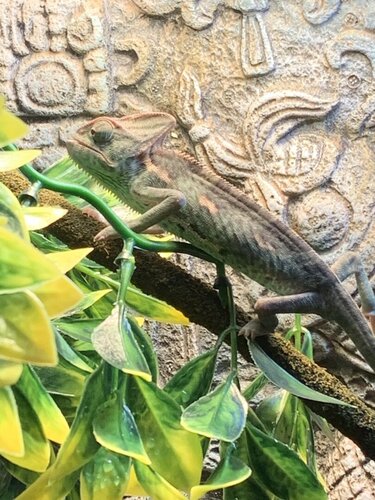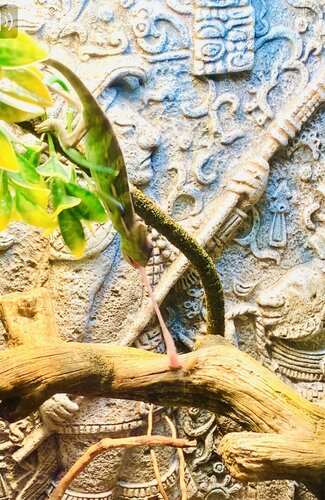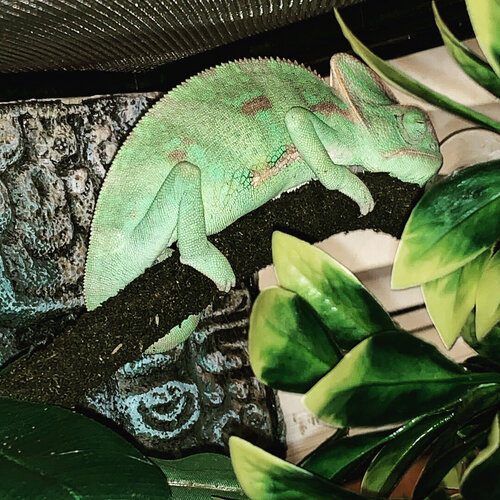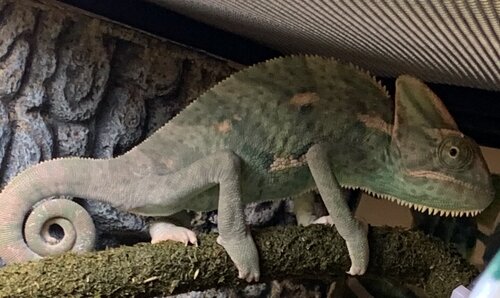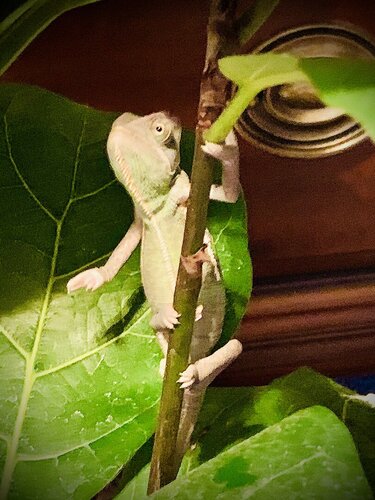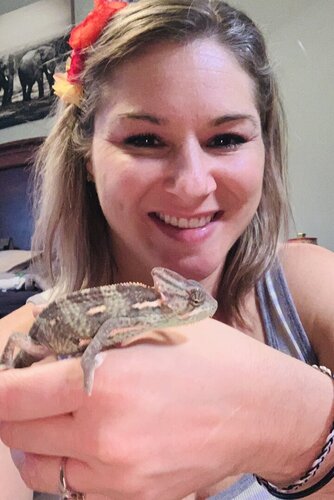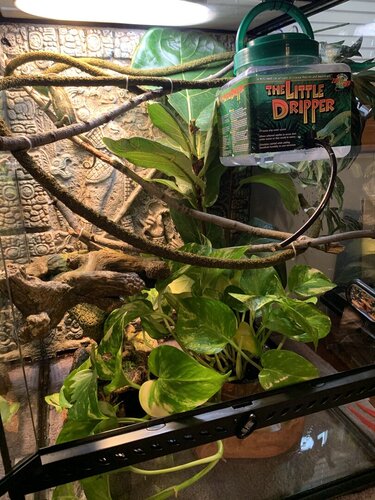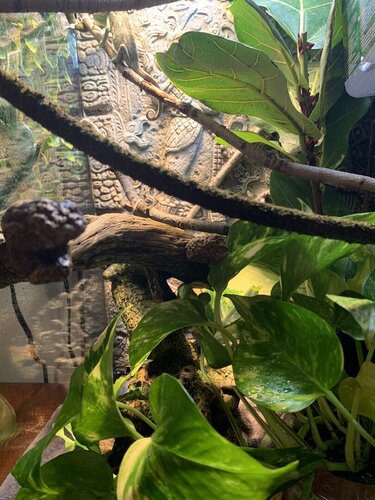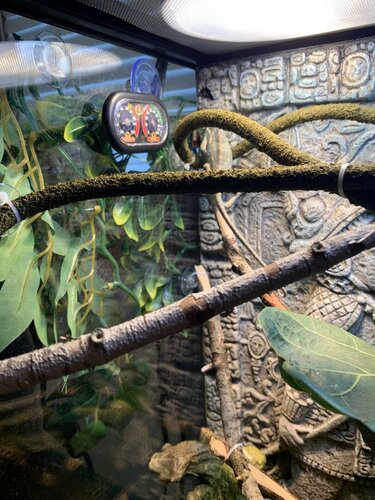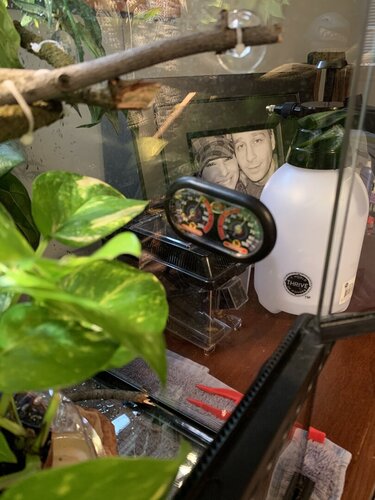Dexter’s Mom
Established Member
Please check my info and let me know how I’m doing. Thanks!
If you could fill this out -- that way forum members can give feedback on the husbandry.
Chameleon Info:
Cage Info:
Current Problem - The current problem you are concerned about. None that I know of currently.
If you could fill this out -- that way forum members can give feedback on the husbandry.
Chameleon Info:
- Your Chameleon - The species, sex, and age of your chameleon. How long has it been in your care? He is about 3-4 months old and I’ve had him a week and a half.
- Handling - How often do you handle your chameleon? I have only handled him a few times.
- Feeding - What are you feeding your cham? What amount? What is the schedule? How are you gut-loading your feeders. I feed him 6 crickets in the morning and 6 in the afternoon. They are gutloaded with carrots, blueberries, escarole and ZooMed natural cricket care. I I have wax worms, but have only given him one so far. He wasn’t impressed. He’s obsessed with eating his Pothos plant, so I gave him some escarole.
- Supplements - What brand and type of calcium and vitamin products are you dusting your feeders with and what is the schedule? Twice a week with Rep Cal calcium with D3. Twice a week with Rep Cal Herptivite.
- Watering - What kind of watering technique do you use? How often and how long to you mist? Do you see your chameleon drinking? I have a little dripper, and a pressure mister. I mist 2-3 times a day for about a minute. I have not seen him drinking.
- Fecal Description - Briefly note colors and consistency from recent droppings. Has this chameleon ever been tested for parasites? His droppings are medium to dark brown with white unrates. He goes once a day almost like clockwork. It’s not hard, but also not soggy. I have not had him tested for parasites.
- History - Any previous information about your cham that might be useful to others when trying to help you. He’s so new I have nothing.
Cage Info:
- Cage Type - Describe your cage (Glass, Screen, Combo?) What are the dimensions? 18x18x24 glass with mesh top. Working on a custom build for when he’s a bit bigger.
- Lighting - What brand, model, and types of lighting are you using? What is your daily lighting schedule? 12 hours of Reptisun 5.0 UVB and 75 watt ZooMed basking bulb. Night time 12 hours of 40 watt purple light (can’t remember brand) we let our house get down to about 60 degrees at night. All outside cage.
- Temperature - What temp range have you created (cage floor to basking spot)?
Basking 85-95, cage floor 60-70 . Lowest overnight temp? 60 degrees. How do you measure these temps? I have thermometers on the top and bottom inside the cage. - Humidity - What are your humidity levels? Levels are 38-50 in top of cage and 50-60 on bottom. How are you creating and maintaining these levels? What do you use to measure humidity? Dual temp and humidity gages at top and bottom of cage. Maintaining by plants and regular misting.
- Plants - Are you using live plants? If so, what kind? I have Pothos and Ficus
- Placement - Where is your cage located? Is it near any fans, air vents, or high traffic areas? At what height is the top of the cage relative to your room floor? 4 ft off floor. In an unused bedroom. I hang out in there, but mostly for reading, no tv, not lots of traffic. There is a ceiling fan, but I’ve avoided putting it on.
- Location - Where are you geographically located? I live in Cleveland , Ohio
Current Problem - The current problem you are concerned about. None that I know of currently.

